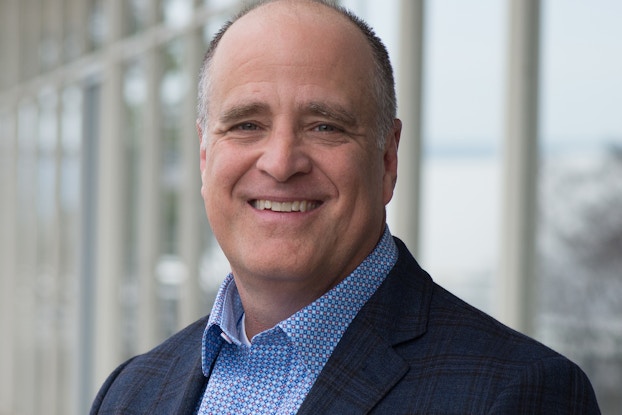
Businesses are navigating an unprecedented digital transformation amid what’s been called the fourth industrial revolution, marked by game-changing technology like artificial intelligence and the “internet of things.”
It falls to companies’ chief technology officers to turn their resulting treasure trove of digital data into business intelligence that catalyzes innovation and drives growth: from patient-customized healthcare treatments informed by human genomic data to optimally stocked retail store shelves based on real-time inventory visibility.
That’s top of mind for the CTOs of Intel, Hewlett Packard Enterprise and Monster.com, they told CO—.
CTOs Mike Mayberry of Intel, Hewlett Packard Enterprise’s Mark Potter and Monster.com’s Steve DeLisle discuss how they’re transforming “oceans of data” into actionable insights to fuel business-to-business and business-to-consumer sales in sectors ranging from retail and technology to healthcare, automotive and staffing.

The ‘explosion of data’ creates ‘new challenges’ and ‘market opportunities’
Mike Mayberry, CTO, Intel
Businesses today are undergoing a digital transformation and collecting more data than ever that’s driving both the rapid growth of information and an increase in new market opportunities.
As this ocean of data continues to expand, we have recognized that computing is not a one-size-fits-all problem and, at Intel, we see a future where multiple architectures will be required for multiple kinds of computing tasks. It’s no secret that with increased connectivity and the explosion of data, new challenges for businesses will arise.
At Intel, we’re focused on developing technologies that help our customers cope and benefit from the faster pace of data and connections for everyone from the PC consumer to the large-scale enterprise, so that whether our customer is a gamer hoping to experience in-game graphics more vividly or a pharmaceutical company looking for a more powerful system to enhance analytics for new drug development and discovery — we’ve got a solution for them.
With access to a variety of Intel products and solutions, for example, retailers can improve inventory management and automakers can use predictive analytics to notify customers when their vehicle might need to come in for servicing. We are moving toward a future that will require a variety of processors and functions working together to unlock insights, and Intel is committed to accelerating the pace of innovation to keep our business partners and customers moving quickly.
Our research and development programs are committed to furthering a variety of technologies required to keep our customers competitive.
We’re exploring a multiarchitecture approach to enable the future of technology, and in order to continue to accelerate progress and computational power we have identified six priority areas of computing research that we believe are critical to this connected world.
These six pillars — architecture, process, memory, interconnectivity, security and software — will enable us to push beyond the physical limitations of computing power today and unlock new abilities in data transfer so that we, with our partners, can continue to push technology advancement further and unlock new possibilities in technology speed, automation, connectivity and energy efficiency.

‘Bringing computing and data together to speed consumer insights’
Mark Potter, CTO, Hewlett Packard Enterprise
HPE is always looking ahead to identify advancements that will improve not only our customers’ performance and business outcomes, but positively impact society. And because our customers span every industry, from agriculture to healthcare to automotive companies, we have an incredible opportunity for our technologies to change the way the world operates.
As the promise of the fourth industrial revolution takes hold, we see rapid digitization across industries, which yields incredible new experiences but also an exponential growth in data. In fact, data is doubling every few years and yet we are only taking advantage of a small percentage of what is being captured. That’s not good enough.
Unlocking insights from this data is key to not only succeeding as a business, but also to solving some of the world’s most critical challenges. Consider human genomics research.
Because of its complexity, decoding the first human genome required $2.7 billion and took 15 years. Remarkable advances in sequencing technologies have brought the costs of genome sequencing to less than $1,000, opening a path for affordable, equitable access globally. This means the average person could have direct access to their own genomic data, but more importantly, practical insights they can act on as well as real-time diagnosis and treatment information.
We see data challenges like this one, across industries, every day. That’s why one of our biggest research and development focus areas is to put data at the center of our core architecture and bring computing and data together to speed customer insights.
We call this memory-driven computing. This radical new approach delivers secure, powerful systems today but also will enable exascale systems —systems capable of performing one billion billion calculations per second. (For reference, that’s one with eighteen zeroes following it—1,000,000,000,000,000,000—calculations per second).
Although no exascale system exists today, they will be the world’s most powerful computers and the most efficient computers ever designed. In fact, exascale systems will be 10 times faster and more energy efficient than today’s fastest high-performance computing machines, which means that incremental advancements in the technology and design will not be sufficient. A new way of computing where data is at the core of the solution is critical to ensuring our success, and we are committed to developing that breakthrough system.
As the promise of the fourth industrial revolution takes hold, we see rapid digitization across industries, which yields incredible new experiences but also an exponential growth in data.Mark Potter, chief technology officer, Hewlett Packard Enterprise
Leverage tech
These three CTOs are harnessing the power of data and new technology to address challenges and find new opportunities. Read on if your small business is looking toward tech to boost sales and productivity.

Tapping artificial intelligence to personalize the job hunt
Steve DeLisle, CTO, Monster.com
Monster is relentlessly focused on the consumer. We know that providing a rewarding experience to candidates is critical, so we are making significant investments to our platform — including evolving our technology to be cloud-based [with] modern user interfaces and process flows and [via] significant investments in artificial intelligence and machine learning to find the right [job] fit for our candidates—to meet those needs. All of this is really to drive a better user experience so that we can be the go-to platform candidates come back to time and again as they transition through their career.
We’re also focused on driving the technology organization to be more dynamic in software process and delivery. Constant improvements to our platform through fast, dynamic, data-driven decisions are critical to driving additional adoption of the platform and, therefore, growth of our organization. Technology impacts more than just technology [but also] sales to marketing, and even finance and legal.
It’s a bit of a cliché these days, but we are collecting so many data signals from our consumers — the data is king. The challenge is really to be able to stitch it together into meaningful patterns that will allow us to react to each individual and present them with the right messages, at the right time of day, on the right [device], so that we can assist people at one of the most important times of their life — finding a new opportunity or the next step in their career.
CO— aims to bring you inspiration from leading respected experts. However, before making any business decision, you should consult a professional who can advise you based on your individual situation.
Want to read more? Be sure to follow us on LinkedIn!
CO—is committed to helping you start, run and grow your small business. Learn more about the benefits of small business membership in the U.S. Chamber of Commerce, here.

Interested in a small business membership?
Find out how the U.S. Chamber of Commerce can help your company grow and thrive in today's rapidly-evolving business environment. Connect with our team to learn how a small business membership can benefit your bottom line and help you achieve your goals.







